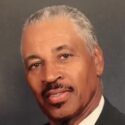 A new study from the Federal Reserve Bank of Philadelphia has analyzed the overrepresentation and underrepresentation of Black, White, and Hispanic men and women in different low-wage and high-wage occupations within United States public workforce system, as well as their occupational training choices.
A new study from the Federal Reserve Bank of Philadelphia has analyzed the overrepresentation and underrepresentation of Black, White, and Hispanic men and women in different low-wage and high-wage occupations within United States public workforce system, as well as their occupational training choices.
The report used data from the 2017-2021 American Community Survey in their analysis. To determine if any given racial group was overrepresented or underrepresented in a certain field, the authors created an index comparing the representation of each group in an occupation compared to each group’s proportion among similarly educated people in the United States population. Overrepresentation is considered any occupation where the percent share is at least 110 percent of its share of similarly educated people, and underrepresentation is considered a share of 90 percent or less.
In occupations where Black workers were overrepresented, their compensation was roughly $20,000 to $30,000 less than that of White men’s in overrepresented occupations. On average, Black men and women who work in underrepresented fields made more than those who worked in overrepresented positions. White men were the only group analyzed whose pay in overrepresented fields was greater than that of underrepresented roles. The study found African Americans were more likely than White men to work in lower-wage, segregated occupations.
When analyzing differences in the public workforce system’s individual training accounts from 2017 in 2019, the report found little difference in the training options chosen among racial groups, but there were disparities seen in pay among different groups. Only 10 percent of men in the study chose to pursue training for a lower-wage, segregated occupation, compared to 40 percent of Black women. Despite little variance in training choices among racial backgrounds, White men and women salaries’ were roughly $5,000 more than those of Black workers of the same gender and occupation.
The report authors believe their findings point towards a greater need to research occupational choice within the public workforce system. They believe factors such as how people set career goals, availability of school career counselors, accessibility of training resources, and duration of training options could shed light on the persistent demographic disparities seen among American public workers.










